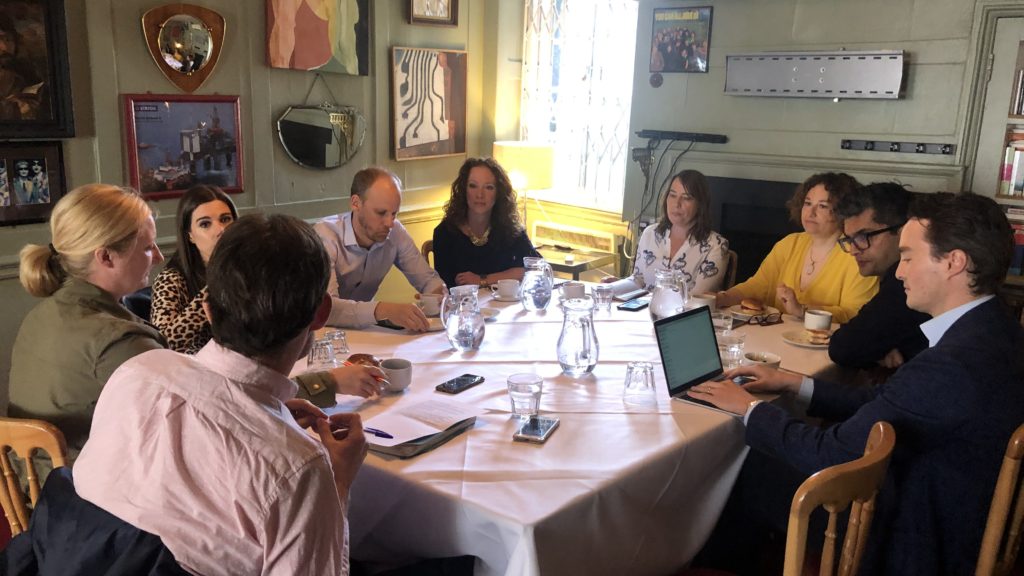Few industries have seen as many changes and challenges as publishing has faced but it is doubling down on innovation and technology for a sustainable future.
Even as regulations, such as GDPR, and consumer privacy innovations from the likes of Facebook, Apple and Google, change the landscape once again, how can publishers not just survive but thrive?
NDA gathered together leaders from across the industry to debate the state of publishing today, shining a light on the many and varied innovations they are putting in place.
The expert roundtable aimed to get under the skin of the industry, exploring the challenges and opportunities it faces in 2019.
The roundtable, chaired by New Digital Age Editor and Bluestripe Partner Justin Pearse, included contributions from Jason Creane, Commercial Director, Permutive; Chetan Damani, MD, TVGuide.co.uk; Jane Wolfson, Hearst UK, Chief Commercial Officer; Emily Brewer, Head of Publishing, Teads; Piers North, Group Digital Director, Reach PLC, Louise Crosby, Digital Sales Director, News UK; Chloe Grutchfield, Co-Founder, Redbud Media.
Their candid thoughts on the realities of publishing today are outlined in this series of articles on New Digital Age.
Should publishers rebrand as digital companies, will video prove the solution for falling print profits, and can collaboration build enough scale to take on the might of Apple, Google and Facebook are some of the questions discussed.
Publishers, they say, must do more with less: they must future-proof their businesses and create experiences that matter for their audiences and advertisers alike, in commercially sustainable ways. Despite the many challenges they face, there was a cautious optimism around the table. There may be no new golden age on the horizon but green shoots to nourish are flourishing.
Publishers today must work harder than ever to scrape a profit in the face of the duopoly — and that means diversifying to meet audience and advertiser expectations in the digital age.
There is no silver bullet or panacea for publishing; instead publishers must be more creative than ever to deliver experiences that matter, to both consumers and advertisers. This has led to varied and ever-evolving strategies for publishers — there is no one-size fits all.
For some, subscription is the focus, others are experimenting with new technology and channels while ecommerce, affiliates, events, licensing and even donations are part of this complex commercial equation.
As Piers North, Reach plc’s Group Digital Director, says: “There is no easy success for big organisations to sustain themselves on a traditional subscribers and advertising model.”
Of the publishers present, News UK is perhaps the most indicative of this new reality: it has two very different models in place for its titles, the upmarket The Times/Sunday Times and the tabloid The Sun.
Over the years it has experimented with paywalls, eventually removing The Sun’s because, as Digital Sales Director Louise Crosby admitted, “we struggled to scale that proposition and get that audience to grow”. The focus now is on creating value for its audience, such as Sun Savers, a loyalty scheme that houses its famed £9.50 holidays offer.
The Times remains behind its paywall, introduced in 2010. Year-on-year subscriber numbers are growing — 550,000 at the last count, and those subscribers are “really engaged”. Part of its success is down to a softening of the paywall, giving registered users access to a number of free articles per week. In doing so, it now has a pool of readers to recruit subscribers from.
Crosby says: “It’s all about the audience ultimately. You can’t take one model and apply it to a different audience — it just doesn’t work.”
TVGuide.co.uk has similarly experimented with its commercial model to varying degrees of success. Managing Director Chetan Damani outlined how a subscriber version of its mobile app, without ads, failed with a conversion rate of 1%. “We are trying a new model at the moment, and that’s Alexa,” he said, suggesting that voice search on devises such as Amazon’s Echo would prove a valuable new stream of revenue.
Advertiser-funded quizzes were particularly successful, with growth running at around 80-90%, he added. Other initiatives to offset falling ad revenues include creating new ad formats and licensing its data such as TV listings to other publishers.
The importance of diversification
Digital on its own simply won’t offset declines in print revenue, agrees Jane Wolfson, Hearst UK Chief Commercial Officer. Hearst has diversified into events and licensing, such as the Country Living hotel or branded sofa. “Our brands are so important because we can use them and go into many different areas,” she said.
“We need as engaged an audience as possible. The sofas, the hotels, the events that we put on — they’re our diversification business and digital is part of that.”
Chloe Grutchfield, Co-Founder of Redbud Media, cited Dennis Publishing as successfully pivoting its online strategy after acquiring a “very small” ecommerce platform BuyaCar. Now around 40% of its revenues come from ecommerce.
Crosby agreed that ecommerce is growing in importance for all publishers but warned of future disruption in the space from Google Shopping. For all, affiliate revenue continued to rise.
Yet as North noted: “It [affiliate] is growing but is quite small compared to the overall business”.
Wolfson summed up the prevailing feeling around the table: “Publishers are doing millions of different things in order to add up to one big number — and that requires a lot of resources.”









